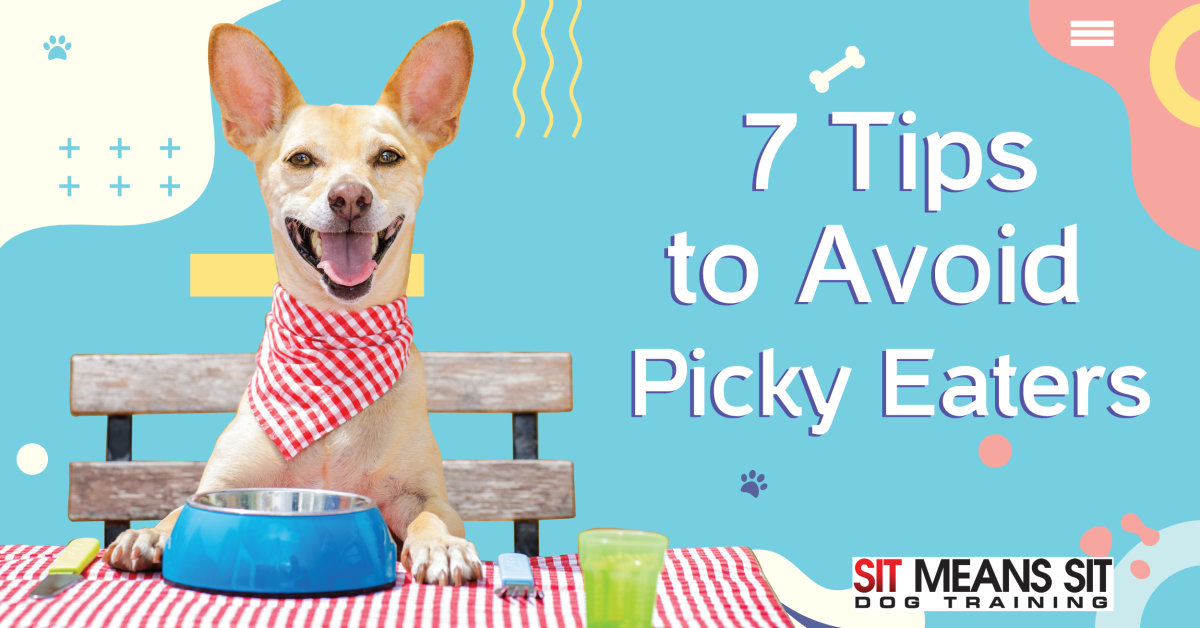
7 Tips to Avoid Picky Eaters
Is your dog picky with their meals?
Picky eating can sometimes snowball into a much bigger problem. What should be a simple chore can become a long process of pleading, coaxing, hand-feeding, or adding (and often wasting) expensive wet foods, toppers, or treats. That is why you want to address picky eating right away and take the necessary steps to turn your picky eater into a mealtime pro!
Biologically Appropriate Food
The first thing to consider if your dog’s appetite seems low is whether or not you are offering them an appropriate diet for their age, size, activity level, and breed. It is a good idea to research the food, the companies involved in producing it, and read the ingredient list. Your veterinarian can help you further understand your dog’s dietary needs if you aren’t confident about choosing a healthy food for your dog.
Portion Their Meals
Make sure your dog’s food is portioned properly. Overfeeding is a serious issue when it comes to dogs’ health and appetite. Check with your vet to determine if what you are offering your dog to eat every day is appropriate.
Also, make sure your dog likes the food. If they used to love it, there’s a good chance you can help them love it again. If they have never seemed to like it, it might be worth trying a couple of similar brands at first to see if you can find a food your dog likes better, making everything easier for both of you.
Visit The Vet
While checking with your vet about feeding amounts, be sure to ask for a full checkup to ensure that there is no medical cause for your dog’s lack of appetite, especially if it is a recent or sudden change. Injury, illness, and dental pain can cause issues with eating and appetite, so a health check and some veterinary care may be necessary before moving on.
Do NOT Free-Feed
Once everything else is squared away, Rule #1 of your dog’s new feeding routine is NO FREE-FEEDING. Nothing squashes a dog’s drive to eat more than having food available to them 24/7 with no effort required. Instead of being a valued resource, food becomes another boring, overlooked part of the environment that they see everyday, causing a loss of interest.
Keep A Routine
A feeding routine will help your dog understand when it is time to eat, and their body will begin to anticipate and prepare for feeding time, increasing appetite. A good rule of thumb is to feed your dog half of their daily portion in the morning around a certain time, and then half in the evening at a certain time.
Offer your dog their food for about 20 minutes, then pick up their bowl and put away whatever they did not eat. It is okay if your dog chooses to skip a few meals or only nibbles a few kibbles at a time. Skipped meals won’t affect a healthy dog’s well being. Understand that your dog is not going to let themselves starve to death – they will eat when their body adjusts to the new system and relearns how to tell them when they are hungry.
Limit Treats & Snacks
Once you begin the feeding routine, you should limit your dog’s access to treats and snacks. Even if your dog has skipped a meal or two, it is critical that you DO NOT give in and offer your dog treats, bones, etc in between mealtimes. If you do, your dog will quickly learn to turn away their food, holding out for treats instead. Treats and snacks do not contain proper nutrition to keep your dog healthy long-term, so it is important that you follow the steps to get them eating their healthy food regularly before reintroducing treats and snacks.
Instead of offering treats, offer them their bowl of food one extra time per day, around midday, if you must. But again, pick it up after about 20 minutes. Soon, your dog will learn the routine and understand mealtimes much better. Once they are eating reliably at mealtimes, you can begin offering treats outside of mealtimes again – just don’t overdo it!
Don’t Overdo The Goodies
You may be tempted to add things to your dog’s food to try to “trick” them into eating. Again, don’t! Once you begin adding things to your dog’s food, it becomes a slippery slope where you will have to add more and more things every day to get them to eat. Dogs will learn to avoid eating their regular, bland food and then get rewarded for not eating with a better “treat” – training them in the opposite direction!
Another reason to avoid adding special treats to your dog’s food is to avoid making them sick. When dogs eat too much of something they are not used to, it can upset their stomach and cause digestive issues. This will set them back with eating since they are least likely to eat when not feeling well.
Lastly, Stick To It!
After you establish your dog’s new feeding routine, stick to it! Your dog is going to try their best to get treats, goodies, and avoid eating their healthy food at first. They may beg or even mope a little bit the first few days. This can really pull at your heartstrings and the temptation to give in to them may be strong, but stay the course. The moment you’ll typically want to give up is actually the most important moment to keep going. It means you are close to a breakthrough!
You’ll find that once your dog begins to value their food, starts anticipating mealtimes, and their body begins to adjust to the new routine, they become much better eaters at mealtime.
